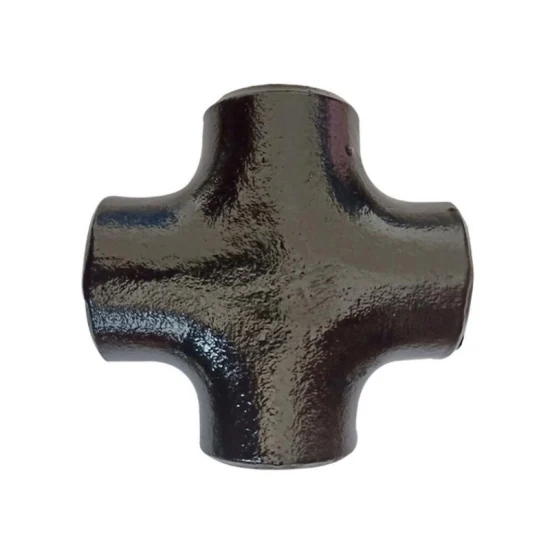-
Cangzhou Yulong Steel Co., Ltd.
-
Phone:
+86 13303177267 -
Email:
admin@ylsteelfittings.com
- English
- Arabic
- Italian
- Spanish
- Portuguese
- German
- kazakh
- Persian
- Greek
- French
- Russian
- Polish
- Thai
- Indonesian
- Vietnamese
- Zulu
- Korean
- Uzbek
- Hindi
- Serbian
- Malay
- Ukrainian
- Gujarati
- Haitian Creole
- hausa
- hawaiian
- Hebrew
- Miao
- Hungarian
- Icelandic
- igbo
- irish
- Japanese
- Javanese
- Kannada
- Khmer
- Rwandese
- Afrikaans
- Albanian
- Amharic
- Armenian
- Azerbaijani
- Basque
- Belarusian
- Bengali
- Bosnian
- Bulgarian
- Catalan
- Cebuano
- China
- China (Taiwan)
- Corsican
- Croatian
- Czech
- Danish
- Esperanto
- Estonian
- Finnish
- Frisian
- Galician
- Georgian
- Kurdish
- Kyrgyz
- Lao
- Latin
- Latvian
- Lithuanian
- Luxembourgish
- Macedonian
- Malgashi
- Malayalam
- Maltese
- Maori
- Marathi
- Mongolian
- Myanmar
- Nepali
- Norwegian
- Norwegian
- Occitan
- Pashto
- Dutch
- Punjabi
- Romanian
- Samoan
- Scottish Gaelic
- Sesotho
- Shona
- Sindhi
- Sinhala
- Slovak
- Slovenian
- Somali
- Sundanese
- Swahili
- Swedish
- Tagalog
- Tajik
- Tamil
- Tatar
- Telugu
- Turkish
- Turkmen
- Urdu
- Uighur
- Welsh
- Bantu
- Yiddish
- Yoruba

Dec . 14, 2024 19:50 Back to list
Specification for EN 1092 PN10 Flanges and Their Applications in Industry
Understanding EN 1092 PN10 Flanges Specifications and Applications
In the realm of industrial engineering and piping systems, flanges play a crucial role in connecting pipes, valves, and other equipment. Among the various standards for flanges, EN 1092-1 2003, a specification developed by the European Committee for Standardization (CEN), provides a comprehensive guideline for the design and manufacturing of flanges, including the popular PN10 category. This article delves into the key features, specifications, applications, and advantages of EN 1092 PN10 flanges.
What is EN 1092 PN10?
EN 1092-1 is a standard for circular flanges, which includes various pressure ratings. The PN stands for Pressure Nominal, which is an indication of the flange's pressure rating in bar at a reference temperature of 20°C. PN10 specifically denotes that the flange can handle a maximum pressure of 10 bar (approximately 145 psi). This standard applies to flanges made from various materials, including carbon steel, stainless steel, and other alloys, ensuring wide applicability across different industries.
Key Features of EN 1092 PN10 Flanges
1. Material Compatibility EN 1092 PN10 flanges are manufactured from diverse materials suitable for different environments. Common materials include carbon steel and stainless steel, each offering unique benefits such as corrosion resistance and strength.
2. Size Range EN 1092-1 specifies a range of nominal sizes, indicating that PN10 flanges can be produced from DN10 (10mm) to DN2000 (2000mm) or larger, catering to various piping systems.
3. Design The flanges come with different designs, including slip-on, blind, threaded, and weld neck, allowing for versatile applications. The standard also covers dimensional requirements, bolt hole spacing, and gasket outlines.
4. Pressure and Temperature Ratings The PN10 rating signifies the operating pressure limit under standard conditions. While the flanges are optimally suited for pressures up to 10 bar, it’s essential to consider temperature factors, with high-temperature applications requiring careful material selection.
Applications of EN 1092 PN10 Flanges
EN 1092 PN10 flanges are widely used across various industries due to their reliability and versatility. Some of the common applications include
en1092 pn10

- Water Supply Systems These flanges are extensively used in municipal water supply networks for their ability to withstand pressure and ensure secure connections in piping systems. - Chemical Industry With the right material selection, PN10 flanges are employed in the chemical sector for transporting various fluids, including aggressive chemicals and gases. - Heating and Cooling Systems In HVAC (heating, ventilation, and air conditioning) applications, these flanges are often integrated into the design of heating and cooling systems due to their reliable sealing capabilities.
- Oil and Gas In the oil and gas industry, where durability and pressure resistance are paramount, PN10 flanges are used in piping systems to ensure safe transportation of crude oil and natural gas.
Advantages of EN 1092 PN10 Flanges
The use of EN 1092 PN10 flanges offers several advantages
1. Standardization The EN 1092-1 standard ensures uniformity, making it easier for engineers to design and specify flanges across different projects and regions.
2. Interchangeability Since these flanges conform to a recognized standard, they can be easily replaced or integrated with other components that meet the same specifications.
3. Durability Flanges manufactured under this standard are designed to endure high pressures and temperatures, contributing to the longevity of the piping system.
4. Cost-Effectiveness The widespread use of EN 1092 PN10 flanges leads to competitive pricing, making them a cost-effective choice for many industrial applications.
Conclusion
EN 1092 PN10 flanges represent a crucial component in piping systems across various industries. Their standardized design, compatibility with different materials, and ability to handle substantial pressures make them an ideal choice for numerous applications, from water supply to the chemical industry. Understanding the specifications and benefits of these flanges can help engineers and project managers make informed decisions, ensuring safe and efficient piping systems.
Latest news
-
ANSI 150P SS304 SO FLANGE
NewsFeb.14,2025
-
ASTM A333GR6 STEEL PIPE
NewsJan.20,2025
-
ANSI B16.5 WELDING NECK FLANGE
NewsJan.15,2026
-
ANSI B16.5 SLIP-ON FLANGE
NewsApr.19,2024
-
DIN86044 PLATE FLANGE
NewsApr.19,2024
-
DIN2527 BLIND FLANGE
NewsApr.12,2024
-
JIS B2311 Butt-Welding Fittings LR/SR 45°/90° /180°Seamless/Weld
NewsApr.23,2024
-
DIN2605-2617 Butt-Welding Fittings LR/SR 45°/90°/180° Seamless/Weld
NewsApr.23,2024











